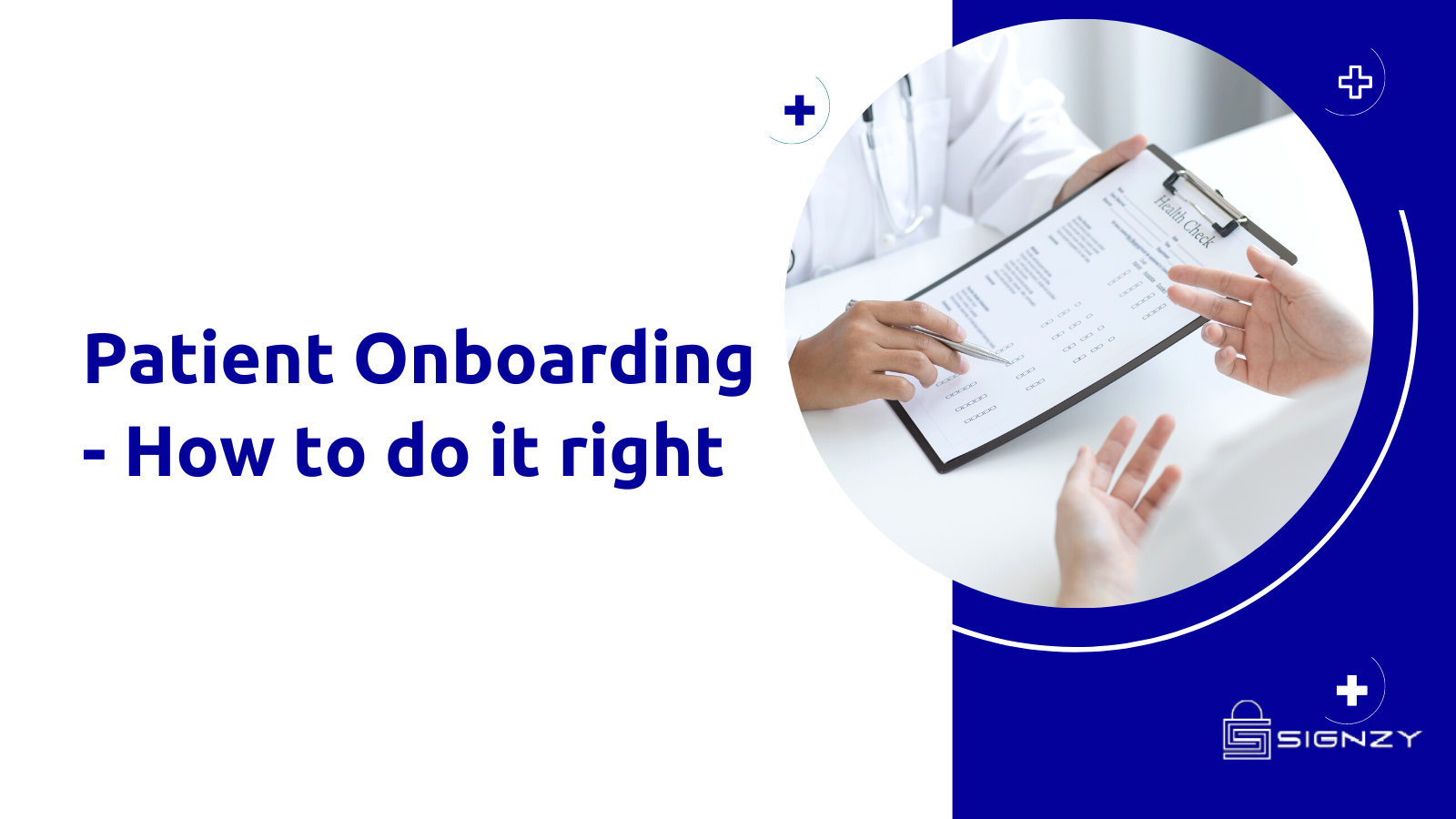Turn the patient onboarding process into an adaptive experience!
Are you still using a manual, paper-based onboarding process for your patients? If so, you’re certainly not alone. While this method has been the standard for many years, it’s increasingly becoming outdated and inefficient. Fortunately, there’s now an alternative that can make the entire process more efficient and engaging: an adaptive patient onboarding experience. In this blog post, we’ll look at why adaptive experience is superior to traditional methods and how you can begin implementing one in your practice today. We’ll also look at some of the best practices to help make sure your transition is seamless and successful.
What is patient onboarding?
Patient onboarding is collecting and verifying the information needed to welcome a new patient to your practice. This usually includes basic contact information, like the patient’s name, address, phone number, and email address. It may also have more detailed information, like the patient’s medical history, insurance information, and preferences for communication and care.
It aims to ensure you have all the information you need to provide quality care for your new patient. By collecting this information upfront, you can avoid delays and disruptions in care later on.
There are many different ways to collect the information needed for the process. For example, you may use paper forms, an electronic health record (EHR) system, or a combination. Whichever method you choose, it’s essential to ensure that your process is efficient and streamlined.
The patient onboarding process doesn’t have to be one-size-fits-all. Instead, you can tailor your approach to fit your practice’s and your patients’ needs. For example, if you see a lot of new patients each week, you should set up an online form that they can fill out in advance. Or, if you have patients with complex medical histories, give them extra time to complete their onboarding paperwork.
You can significantly impact your patients by making a few simple changes to your patient onboarding process.
The importance of a good patient onboarding process
A good patient onboarding process is important for several reasons:
- It helps ensure that patients are correctly introduced to the healthcare organization and understand their care expectations.
- It can build trust between the patient and the provider.
- It can reduce anxiety and stress for the patient and the provider.
How to make your patient onboarding process adaptive
When it comes to patient onboarding, making the process adaptive can go a long way in ensuring a positive experience for both the patient and the care team. Here are a few tips on how to make your patient onboarding process adaptive:
- Support patients through every step of the journey
From the moment a patient schedules an appointment to their follow-up visit, it is important to provide clear and concise information at every stage of their journey. This includes sending reminders about upcoming meetings, providing easy-to-understand instructions on what they need to do to prepare for their visits, and having dedicated staff available to answer any questions.
- Make use of technology
Many technology solutions can help streamline the patient onboarding process. For example, online registration forms can save time and reduce paperwork, while appointment reminders sent via text or email can help ensure patients remember their upcoming visits.
- Be flexible
Every patient is different, so not every onboarding experience will be identical. Therefore, it is important to be flexible and tailor the onboarding process to each patient’s needs. This could involve providing additional support for those with chronic conditions or disabilities and offering working parents alternative appointment times.
- Collect feedback and use it to improve
What are the benefits of an adaptive patient onboarding process?
There are many benefits of an adaptive patient onboarding process. By tailoring the approach to each patient’s needs, you can ensure they have a positive experience and are more likely to return for future visits.
An adaptive patient onboarding process can also help to build trust between the patient and the healthcare provider. Patients who feel they are being listened to and their needs are being met are more likely to be loyal to the provider and recommend them to others.
Finally, an efficient process can save time and money for both the provider and the patient. By streamlining the process and making it more efficient, you can reduce the overall cost of care while still providing high-quality service.
Conclusion
The global Artificial Intelligence in healthcare market size and share is expected to surpass $95.65 Billion by 2028. Adaptive patient onboarding is a great way to ensure you provide the best possible patient experience. By taking the time to personalize each individual’s experience, you can provide them with a seamless and efficient process. This will help reduce wait times, costs, and frustration from patients and staff. With the right tools in place, adaptive patient onboarding can ultimately improve care quality, better customer satisfaction score ratings, and tremendous overall success for your medical practice.
About Signzy
Signzy is a market-leading platform redefining the speed, accuracy, and experience of how financial institutions are onboarding customers and businesses – using the digital medium. The company’s award-winning no-code GO platform delivers seamless, end-to-end, and multi-channel onboarding journeys while offering customizable workflows. In addition, it gives these players access to an aggregated marketplace of 240+ bespoke APIs that can be easily added to any workflow with simple widgets.
Signzy is enabling ten million+ end customer and business onboarding every month at a success rate of 99% while reducing the speed to market from 6 months to 3-4 weeks. It works with over 240+ FIs globally, including the 4 largest banks in India, a Top 3 acquiring Bank in the US, and has a robust global partnership with Mastercard and Microsoft. The company’s product team is based out of Bengaluru and has a strong presence in Mumbai, New York, and Dubai.
Visit www.signzy.com for more information about us.
You can reach out to our team at reachout@signzy.com



